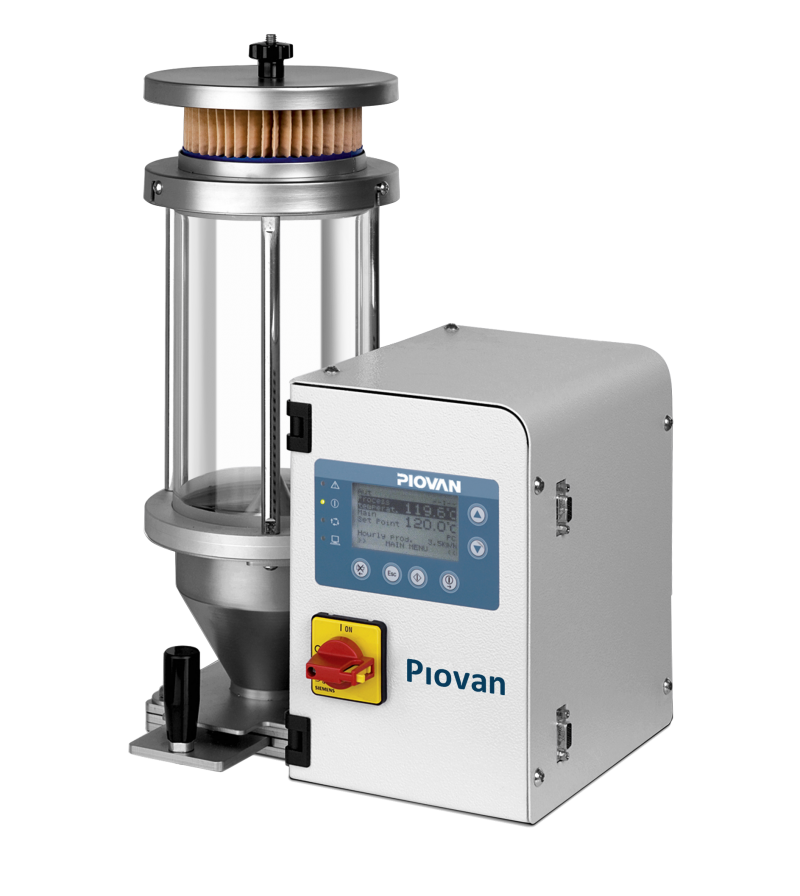DPA compressed air dryer

Technical information
The new dryers of the DPA Series use compressed air for the treatment of hygroscopic polymers. Currently we have 6 models available, with a drying capacity ranging from 0,5 to 25 kg/h with an average dew point value of -25°C. The dew point can be extended up to -40°C by placing optional molucal sieves in the appliance.
Setting of the working parameters
The control offers a database, containing 50 materials complete with pre-defined set values for optimal processing. This database can be modified freely and integrated with new data. Based on the selected material and the filled in raw material consumption, the control automatically regulates the process conditions.
Energy use optimisation
Based on the selected material and the filled in raw material consumption the control will adjust the airflow (modulating valve with 7 calibrated flow rates). This way the system reduces the consumption of expensive compressed air to the flow rate required for proper drying.The control can be connected to the feeding hopper loader making the effective consumption of the machine better known. Based on this additional information the dryer can adjust the compressed air consumption even more through the IMD function (Intelligent Material Drying) and avoid over-heating or thermal degradation of the raw materials.
Easy cleaning
The drying hopper is equipped with removable diffusing cone, for cleaning operations for simple and rapid material changes
Dew Point values up to -40°C
Thanks to the desiccant towers (optional) the range of hygroscopic materials, which can be dried with compressed air, can be expanded considerably. The regeneration process is carried out without heat, by means of compressed air supply.
Benefits
● Open Material Database
● Self-adaptation of the working parameters based on the selected material and the given consumption rate
● Dew Point values down to -40°C
● Protection of the raw materials from degradation (IMD)
● Easy cleaning whit rapid material changes
